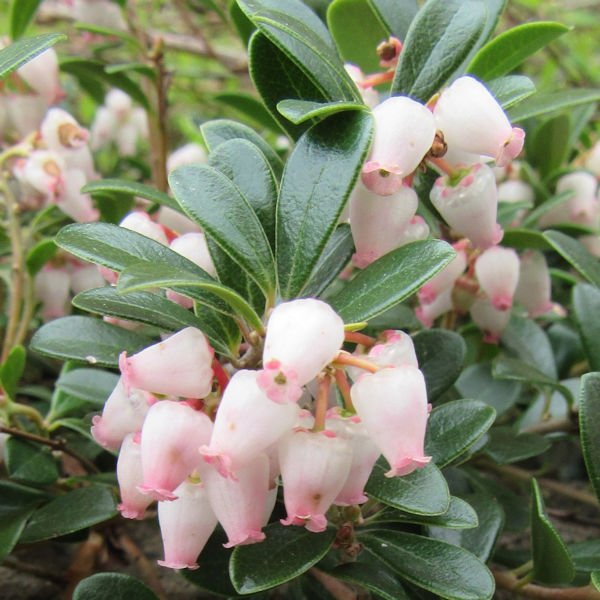Bearberry
Kinnikinnick, Arctostaphylos uva-ursi
Ute: tahmahup; Arapaho: Noh’úwunobí:se’ (“smoke plant berries”), Noh’uwúno’ (“bearberries”); Cheyenne: No?aneonotse, ma?kemenotse (“red berry”)
flowering season: March - June
A low-growing evergreen shrub, she grows into large mats that carpet forest floors. Her leaves are shiny and leathery, her tiny bell-shaped flowers hang in small clusters in spring, and bright red berries form in late summer. The berries are bland when eaten raw, but were cooked with meat and dried into cakes by Indigenous peoples, and can be made into jams and jellies. Young leaves can be made into a tea, a traditional medicine for urinary tract health. Bears in particular utilize this plant - in late fall, they eat the berries and other vegetation to create a blockage in their digestive system for the winter hibernation season. She can also be used to make a yellow dye.
She is often called Kinnikinnick, an Algonquin word for "that which is mixed". Dried Bearberry leaves are often the base ingredient, combined with other herbs (red osier dogwood, arrowroot, sumac, laurel, huckleberry, cherry bark, mullein, and sometimes tobacco) for smoking mixtures. Recipes for mixtures vary, as do the uses, from social, to spiritual, to medicinal. By extension, the name came to be used for many shrubs of which the bark and leaves are used in smoking mixtures, but this plant is Bearberry or Uva Ursi.





